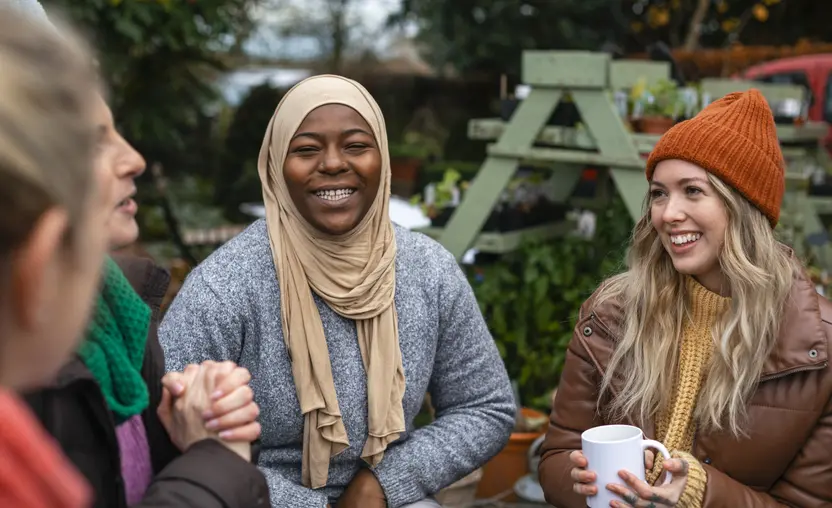On average, 56% of donors attend nonprofit organizations’ events on a regular basis. This statistic proves that events are effective for engaging donors and cultivating relationships, but there’s always room for improvement. This guide will provide tips to increase your organization’s event attendance numbers and make your events more impactful. But first, let’s break down why hosting donor cultivation events is worthwhile.
Benefits of donor cultivation events
The most valuable benefit is that donor cultivation events connect donors to your purpose. They also offer a fun, relaxed, social setting for you and your board to get to know your donors without formalities.
Here are just five of the many ways donor cultivation events can benefit your organization:
- Donors see the need for your work firsthand.
- Your staff get to mingle with donors and ask them questions about their preferences and priorities.
- Donors get immersed in your purpose through a unique experience.
- Events drive donation upgrades and donor retention.
- Cultivation events can bring in new prospects.
Overall, these events provide excellent opportunities for donor stewardship, which is vital for keeping your supporter base strong.
The basics: how to host a donor cultivation event
We’ll discuss how to level up your event next, but first we need to cover the standard cultivation event schedule. Typical donor cultivation events follow these basic steps:
- A nonprofit hosts a house party, open house, or cocktail reception for donors.
- A member of leadership, such as the executive director or founder, provides a welcome.
- One or more board members introduce themselves.
- A beneficiary gives a brief but meaningful testimonial about how the nonprofit helped them.
- Donors, board members, and staff mingle and get to know each other.
These events can range from large-scale, open events for all donors to smaller, selective parties just meant to cultivate prospective major donors. You can easily vary this basic structure to align with your nonprofit’s current priorities.
Tips for hosting a top-notch donor cultivation event
Now that you know the basics, challenge yourself to take your events up a notch. Why? According to fundraising expert and author Adrian Sargeant, “the more immersive the experience, the more likely the impression can result in a donor relationship.”
Top-notch events don’t have to be expensive or time-consuming to plan. Even on a tight budget, you can pull off a donor cultivation event that delights donors and inspires larger and more loyal giving. How? Start by asking yourself these questions:
- Who is your audience for this event: major donors, mid-level donors, prospects, board members, media, stakeholders, or someone else?
- What activities would appeal the most to your audience?
- How can you make your event as immersive as possible to provide an up-close look at your nonprofit’s purpose?
- What initiatives are in progress that would be meaningful for your donors to know about?
- What volunteer opportunities can you offer that will allow donors to feel a part of your purpose in a fun, engaging way?
- What is your follow-up plan for everyone who attends?
Now, it’s time to plan the details. Produce every moment of this experience from start to finish, and develop a follow-up plan that moves attendees to give. Consider adding ideas like these to your plan for the day:
- Valet parking
- A green room where guests can mingle with other donors and enjoy refreshments
- A personal welcome from a board member volunteer
- The chance to speak directly with a beneficiary about your nonprofit’s work
- A staff liaison who stays with attendees throughout the day
- A warm thank you and follow-up survey to learn what guests thought afterward
Once you get donors to your fantastic event, don’t forget to track attendance! Bonterra Donor Engagement’s Guided Fundraising solution (formerly Network for Good) allows you to access your database from your mobile device. This means you can track attendance and take notes on your conversations with all of your donors during the event.
After you’ve applied all of these tips to host a successful event and followed up with attendees, the final step is to take note of guest feedback for future events.
Meeting donors in your area and beyond
If you are a virtual or global organization, you can still engage donors in your purpose with cultivation events. There are plenty of great options for virtual events you can try. No matter which type of event you decide to host, the secret is leveraging what you’re already doing to host a tightly-managed event that gets donors involved in your work.
About Rachel Muir CFRE, Vice President, Training
Rachel Muir launched Girlstart, a nonprofit organization to empower girls in math, science, engineering, and technology in the living room of her apartment with $500 and a credit card. Several years later, she had raised more than 10 million dollars and was featured on Oprah, CNN, and The Today Show. Her career spans running successful nonprofit organizations, leading an online fundraising consulting practice, and managing major gift portfolios for some of the country’s largest nonprofit brands.
Sign up to get free webinar invites from Rachel and learn more about her training at www.pursuant.com.




